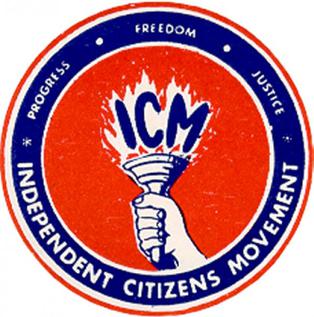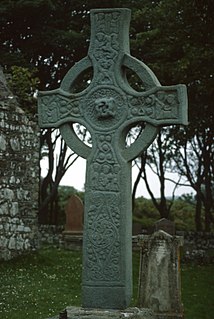
The British Virgin Islands (BVI), officially the Virgin Islands, are a British Overseas Territory in the Caribbean, to the east of Puerto Rico and the U.S. Virgin Islands and north-west of Anguilla. The islands are geographically part of the Virgin Islands archipelago and are located in the Leeward Islands of the Lesser Antilles and part of the West Indies.
The Eastern Caribbean dollar is the currency of all seven full members and one associate member of the Organisation of Eastern Caribbean States (OECS). The successor to the British West Indies dollar, it has existed since 1965, and it is normally abbreviated with the dollar sign $ or, alternatively, EC$ to distinguish it from other dollar-denominated currencies. The EC$ is subdivided into 100 cents. It has been pegged to the United States dollar since 7 July 1976, at the exchange rate of US$1 = EC$2.70.

The United States Virgin Islands, officially the Virgin Islands of the United States, are a group of Caribbean islands and an unincorporated and organized territory of the United States. The islands are geographically part of the Virgin Islands archipelago and are located in the Leeward Islands of the Lesser Antilles to the east of Puerto Rico and west of the British Virgin Islands.

The Virgin Islands are an archipelago in the Caribbean Sea. They are geologically and biogeographically the easternmost part of the Greater Antilles, the northern islands belonging to the Puerto Rico Trench and St. Croix being a displaced part of the same geologic structure. Politically, the British Virgin Islands have been governed as the western island group of the Leeward Islands, which are the northern part of the Lesser Antilles, and form the border between the Caribbean Sea and the Atlantic Ocean. The archipelago is separated from the true Lesser Antilles by the Anegada Passage and from the main island of Puerto Rico by the Virgin Passage.

Aurich is a district (Landkreis) in Lower Saxony, Germany. It is bounded by the North Sea, the districts of Wittmund and Leer, and the city of Emden.
VG, vg or v.g. may refer to:

The flag of the United States Virgin Islands was adopted on May 17, 1921. It consists of a simplified version of the coat of arms of the United States between the letters V and I. The yellow-colored eagle holds a sprig of laurel in one talon, which symbolizes victory, and three blue arrows in the other, which represent the three major islands that make up the U.S. Virgin Islands: Saint Croix, Saint Thomas, and Saint John. When the Virgin Islands were owned by Denmark, the flag was a blue ensign with the Danish flag, or Dannebrog, in the canton.

Territories of the United States are sub-national administrative divisions overseen by the U.S. federal government. The various U.S. territories differ from the U.S. states and Native American tribes in that they are not sovereign entities. In contrast, each state has a sovereignty separate from that of the federal government and each federally recognized Native American tribe possesses limited tribal sovereignty as a "dependent sovereign nation". Territories are classified by incorporation and whether they have an "organized" government through an organic act passed by the Congress. U.S. territories are under U.S. sovereignty and, consequently, may be treated as part of the United States proper in some ways and not others. Unincorporated territories in particular are not considered to be integral parts of the United States, and the Constitution of the United States applies only partially in those territories.
U.S. states, districts, and territories have representative symbols that are recognized by their state legislatures, territorial legislatures, or tradition. Some, such as flags, seals, and birds have been created or chosen by all U.S. polities, while others, such as state crustaceans, state mushrooms, and state toys have been chosen by only a few.
The music of the Virgin Islands reflects long-standing West Indian cultural ties to the island nations to the south, the islands' African heritage and European colonial history, as well as recent North American influences. Though the United States Virgin Islands and British Virgin Islands are politically separate, they maintain close cultural ties. From its neighbors, the Virgin Islands has imported various pan-Caribbean genres of music, including calypso and soca from Trinidad and reggae from Jamaica.

The Independent Citizens Movement is a political party in the U.S. Virgin Islands that was founded by Virdin C. Brown and Steve O'Reilly in 1968. Its symbol is the torch. The party advocates for grassroots participation in politics, as well as more autonomy for the U.S. Virgin Islands.

The coat of arms of the British Virgin Islands consists of a green escutcheon (shield) charged with a woman in a white dress and gold-coloured sandals, holding a lit golden oil lamp and surrounded by eleven other golden lamps. Adopted shortly after the islands became a Crown colony, it has been the coat of arms of the British Virgin Islands since 1960. The escutcheon dates from the early 19th century and is featured on the flag of the territory. The woman and the lamps represent Saint Ursula and her companions, the namesake of the islands.

The Kildalton Cross is a monolithic high cross in Celtic cross form in the churchyard of the former parish church of Kildalton (from Scottish Gaelic Cill Daltain, "Church of the Foster Son" on the island of Islay in the Inner Hebrides, Scotland. It was carved probably in the second half of the 8th century AD, and is closely related to crosses of similar date on Iona. It is often considered the finest surviving Celtic cross in Scotland, and is certainly one of the most perfect monuments of its date to survive in western Europe. The cross and the adjacent roofless medieval parish church are in the care of Historic Environment Scotland and are jointly a scheduled ancient monument. A simpler cross of late medieval date stands nearby.

The seal of the United States Virgin Islands is an official symbol of the United States Virgin Islands.

The following outline is provided as an overview of and topical guide to the British Virgin Islands:

The following outline is provided as an overview of and topical guide to the United States Virgin Islands:

The Virgin of Candelaria or Our Lady of Candle, popularly called La Morenita, celebrates the Virgin Mary on the island of Tenerife, one of the Canary Islands (Spain). The center of worship is located in the city of Candelaria in Tenerife. She is depicted as a Black Madonna. The "Royal Basilica Marian Shrine of Our Lady of Candelaria" is considered the main church dedicated to the Virgin Mary in the Canary Islands and she is the patron saint of the Canary Islands. Her feast is celebrated on February 2 and August 15, the patronal feast of the Canary Islands.

The Reef Bay Trail petroglyphs are a group of Taíno petroglyph carvings found in the Virgin Islands National Park on the island of St. John, United States Virgin Islands. They are located in a part of the park called the Reef Bay Trail.

The United States Virgin Islands (USVI) sent a delegation to compete at the 2014 Winter Olympics held in Sochi, Russia from 7–23 February 2014. This marked the return of the Virgin Islands to the Winter Olympics after missing the 2010 edition, and was their sixth time competing at a Winter Olympic Games. The USVI team consisted of one athlete in alpine skiing, Jasmine Campbell. She finished 56th in the giant slalom and 43rd in the slalom.



















